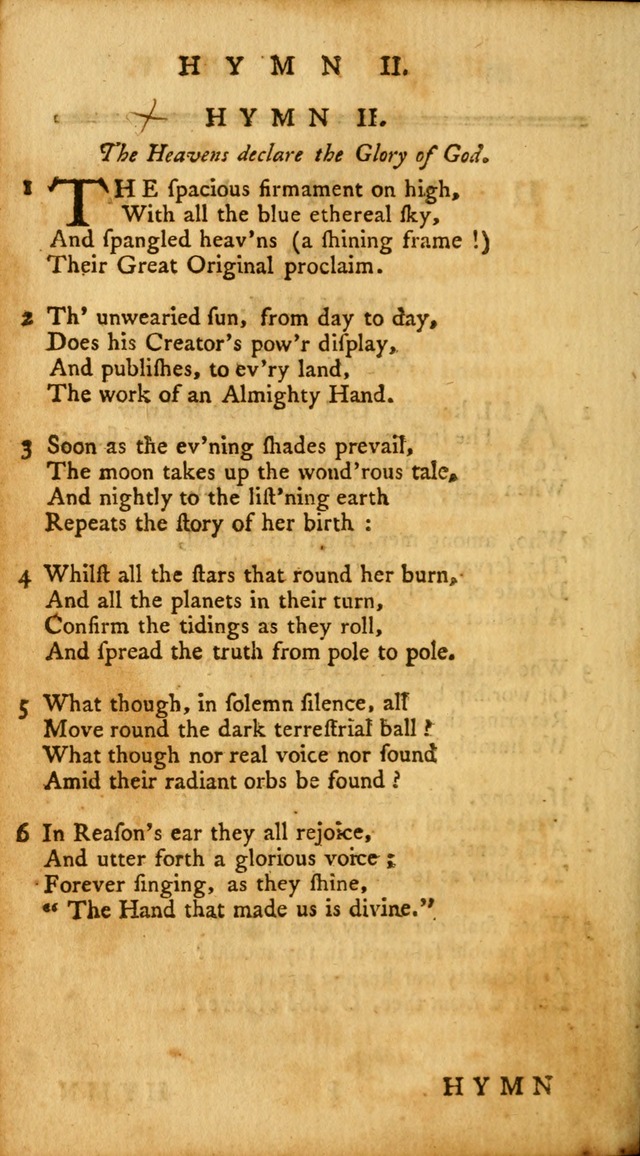Blog
“The Problem Isn't New Versus Old”
Categories: M. W. Bassford, Meditations
For years, I’ve been an advocate of using quality hymns in worship. Not surprisingly, there are plenty of folks who disagree with me, particularly when I get to picking on contemporary praise songs that I don’t think are useful in congregational worship. They’ve even been known to get upset about it. It’s like I called their dog ugly or something.
One of the most common countercharges is that I don’t like the contemporary songs I don’t like because I’m stuck in the past. According to this way of thinking, I believe the only good hymns are the ones written in the 19th century, filled with “Thee” and “Thou”, and possessed of syntax so convoluted that only Yoda could love it. Oh, and the music has to sound like it was born on a pipe organ too.
There are certainly people who believe such things, but I’m not one of them. I think “Abide with Me” is a wonderful hymn, but not every hymn has to sound like “Abide with Me” to be good. Instead, my usual indictment of many modern worship songs is that 1) they lack strong Biblical content, and 2) the music is too complicated for a congregation to learn easily.
Neither one of these things is a necessary attribute of sacred songs written in the past 50 years, though such songs often fail on one or both counts. Rather, they are frequently problems because modern authors and composers generally don’t make good content and congregationality their priorities, particularly the latter.
Chris Tomlin doesn’t write music for me and my modest range. He writes music for Chris Tomlin, Chris Tomlin’s wonderful range, and Chris Tomlin’s backup band of professional musicians. Most brethren, however, have musical gifts much more like mine than like Chris Tomlin’s. Is it any wonder when they struggle with the Chris Tomlin repertoire?
However, when contemporary writers pay attention to content and the musical abilities of ordinary worshipers, they can turn out some excellent work that is eminently suitable for use in our assemblies. By now, most brethren are familiar with “In Christ Alone”, written by Stuart Townend and Keith and Kristin Getty. Together and separately, they’ve written plenty of other hymns that are comparable in quality and usefulness. The same goes for Bob Kauflin and the many writers who have been associated with Sovereign Grace through the years.
Recently, the Australian group CityAlight has attracted my attention (the tagline on their website is “Christian worship music with Biblically rich lyrics”, which is a good sign). Yes, they use drums and guitars, but brethren have been adapting denominational hymns for a-cappella use since the Restoration. We can do it here too.
Consider, for instance, the CityAlight song “Jesus Strong and Kind”, which I recently encountered for the first time. Its lyrics are:
1. Jesus said that if I thirst
I should come to Him;
No one else can satisfy;
I should come to Him.
2. Jesus said if I am weak
I should come to Him;
No one else can be my strength;
I should come to Him.
Chorus:
For the Lord is good and faithful;
He will keep us day and night;
We can always run to Jesus,
Jesus, strong and kind.
3. Jesus said that if I fear
I should come to Him;
No one else can be my shield;
I should come to Him.
(Chorus)
4. Jesus said if I am lost
He will come to me;
And He showed me on that cross
He will come to me.
(Chorus)
That’s good. It doesn’t look like the hymns Isaac Watts wrote, nor yet like the hymns I write. It’s still good. It reveals Biblical study and contemplation, it is focused, and it is deeply meaningful to the believer, especially those who also have spent time in study of the word.
If I may indulge in hymn-geekery for a moment, it’s also good because of its structural strength. Like many modern praise songs, it doesn’t use a strong rhyme scheme and can’t develop structure that way. Instead, it employs repetition, mixed with a few powerful word changes, as its structural element. The change from “thirst” and “satisfy” to “weak” and “strength” makes v. 2 meaningfully different from v. 1, even though most of the words are the same. However, the whole still has unity because of those similarities.
The music is also (or should be, at least) congregationally accessible. The use of verses means that brethren who learn music by rote don’t have to learn as much. The range is limited to a congregation-friendly octave, C to C in the original sheet music, though I’d probably raise it to D or Eb for four-part a-cappella use. I like the tune, too. Churches of Christ should be able to sing this one easily.
When was this fine piece of hymnody written? 2019. All it takes is somebody in the denominational world who cares about the Bible and congregational singing, and they’ll hand us something we can use.
Indeed, this happens frequently. This year, I wrote a workbook called Singing with Understanding for a Bible class I taught. Each lesson of the workbook pitted an unfamiliar hymn I liked against an unfamiliar hymn I didn’t so that the class could analyze the qualities of good and bad hymns. For the sake of fairness, I segregated hymns by time period: old good against old bad, new good against new bad. Of the four categories, I had by far the easiest time filling out the “New Good” category because so many of the best worship songs being written now are unfamiliar to the church.
That’s a shame. Rather than allowing CCM icons and praise teams to drive the additions to our repertoire, we ought instead to be looking for songs that are written for and will benefit the congregation. If we seek, we will find, and our song worship will benefit immeasurably thereby.





